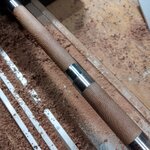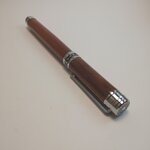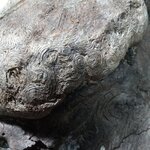sorcerertd
Member
Apparently growth over a tree wound is called callous tissue. I suppose that makes sense. The real question is, does it make for good pen blanks? Here are some pics of stuff I pulled from that monster white oak that was taken down in my yard. Wondering if anyone has some experience with it?
I was thinking it would likely need to be stabilized, but would probably take dye well and make some cool hybrids. The first pic is on the tree trunk and the second after it was cut off (I have a lot more of this stuff). The last pic is of a different, smaller piece to show some of the grain pattern closeup.
EDIT: apparently callous tissue is the same as a burl. Yeah, that makes sense, too when I think about it. So, I guess we have here some sapwood burl.



I was thinking it would likely need to be stabilized, but would probably take dye well and make some cool hybrids. The first pic is on the tree trunk and the second after it was cut off (I have a lot more of this stuff). The last pic is of a different, smaller piece to show some of the grain pattern closeup.
EDIT: apparently callous tissue is the same as a burl. Yeah, that makes sense, too when I think about it. So, I guess we have here some sapwood burl.
Last edited:




